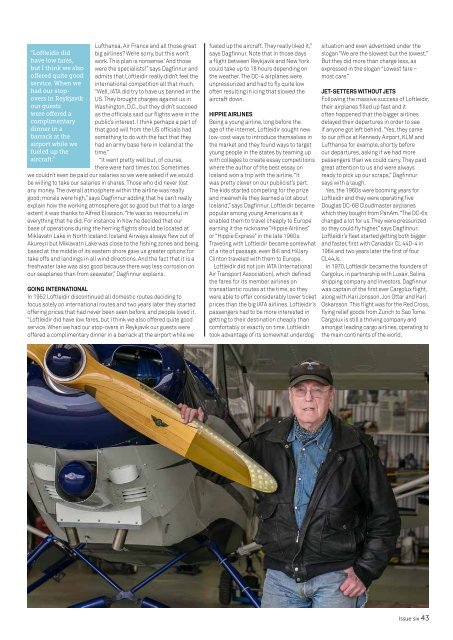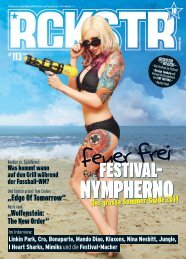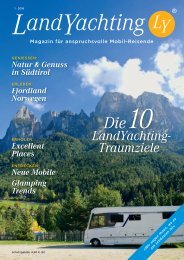WOWair
Create successful ePaper yourself
Turn your PDF publications into a flip-book with our unique Google optimized e-Paper software.
“Loftleidir did<br />
have low fares,<br />
but I think we also<br />
offered quite good<br />
service. When we<br />
had our stopovers<br />
in Reykjavik<br />
our guests<br />
were offered a<br />
complimentary<br />
dinner in a<br />
barrack at the<br />
airport while we<br />
fueled up the<br />
aircraft.”<br />
Lufthansa, Air France and all those great<br />
big airlines? We’re sorry, but this won’t<br />
work. This plan is nonsense.’ And those<br />
were the specialists!” says Dagfinnur and<br />
admits that Loftleidir really didn’t feel the<br />
international competition all that much.<br />
“Well, IATA did try to have us banned in the<br />
US. They brought charges against us in<br />
Washington, D.C., but they didn’t succeed<br />
as the officials said our flights were in the<br />
public’s interest. I think perhaps a part of<br />
that good will from the US officials had<br />
something to do with the fact that they<br />
had an army base here in Iceland at the<br />
time.”<br />
“It went pretty well but, of course,<br />
there were hard times too. Sometimes<br />
we couldn’t even be paid our salaries so we were asked if we would<br />
be willing to take our salaries in shares. Those who did never lost<br />
any money. The overall atmosphere within the airline was really<br />
good; morals were high,” says Dagfinnur adding that he can’t really<br />
explain how the working atmosphere got so good but that to a large<br />
extent it was thanks to Alfred Eliasson. “He was so resourceful in<br />
everything that he did. For instance in how he decided that our<br />
base of operations during the herring flights should be located at<br />
Miklavatn Lake in North Iceland. Iceland Airways always flew out of<br />
Akureyri but Miklavatn Lake was close to the fishing zones and being<br />
based at the middle of its eastern shore gave us greater options for<br />
take offs and landings in all wind directions. And the fact that it is a<br />
freshwater lake was also good because there was less corrosion on<br />
our seaplanes than from seawater,” Dagfinnur explains.<br />
Going international<br />
In 1952 Loftleidir discontinued all domestic routes deciding to<br />
focus solely on international routes and two years later they started<br />
offering prices that had never been seen before, and people loved it.<br />
“Loftleidir did have low fares, but I think we also offered quite good<br />
service. When we had our stop-overs in Reykjavik our guests were<br />
offered a complimentary dinner in a barrack at the airport while we<br />
fueled up the aircraft. They really liked it,”<br />
says Dagfinnur. Note that in those days<br />
a flight between Reykjavik and New York<br />
could take up to 18 hours depending on<br />
the weather. The DC-4 airplanes were<br />
unpressurized and had to fly quite low<br />
often resulting in icing that slowed the<br />
aircraft down.<br />
Hippie Airlines<br />
Being a young airline, long before the<br />
age of the internet, Loftleidir sought new<br />
low-cost ways to introduce themselves in<br />
the market and they found ways to target<br />
young people in the states by teaming up<br />
with colleges to create essay competitions<br />
where the author of the best essay on<br />
Iceland won a trip with the airline. “It<br />
was pretty clever on our publicist’s part.<br />
The kids started competing for the prize<br />
and meanwhile they learned a lot about<br />
Iceland,” says Dagfinnur. Loftleidir became<br />
popular among young Americans as it<br />
enabled them to travel cheaply to Europe<br />
earning it the nickname “Hippie Airlines”<br />
or “Hippie Express” in the late 1960s.<br />
Traveling with Loftleidir became somewhat<br />
of a rite of passage, even Bill and Hillary<br />
Clinton traveled with them to Europe.<br />
Loftleidir did not join IATA (International<br />
Air Transport Association), which defined<br />
the fares for its member airlines on<br />
transatlantic routes at the time, so they<br />
were able to offer considerably lower ticket<br />
prices than the big IATA airlines. Loftleidir’s<br />
passengers had to be more interested in<br />
getting to their destination cheaply than<br />
comfortably or exactly on time. Loftleidir<br />
took advantage of its somewhat underdog<br />
situation and even advertised under the<br />
slogan “We are the slowest but the lowest.”<br />
But they did more than charge less, as<br />
expressed in the slogan “Lowest fare –<br />
most care.”<br />
Jet-setters without jets<br />
Following the massive success of Loftleidir,<br />
their airplanes filled up fast and it<br />
often happened that the bigger airlines<br />
delayed their departures in order to see<br />
if anyone got left behind. “Yes, they came<br />
to our office at Kennedy Airport, KLM and<br />
Lufthansa for example, shortly before<br />
our departures, asking if we had more<br />
passengers than we could carry. They paid<br />
great attention to us and were always<br />
ready to pick up our scraps,” Dagfinnur<br />
says with a laugh.<br />
Yes, the 1960s were booming years for<br />
Loftleidir and they were operating five<br />
Douglas DC-6B Cloudmaster airplanes<br />
which they bought from PanAm. “The DC-6s<br />
changed a lot for us. They were pressurized<br />
so they could fly higher,” says Dagfinnur.<br />
Loftleidir’s fleet started getting both bigger<br />
and faster, first with Canadair CL 44D-4 in<br />
1964 and two years later the first of four<br />
CL44Js.<br />
In 1970, Loftleidir became the founders of<br />
Cargolux, in partnership with Luxair, Selina<br />
shipping company and investors. Dagfinnur<br />
was captain of the first ever Cargolux flight,<br />
along with Kari Jonsson, Jon Ottar and Karl<br />
Oskarsson. This flight was for the Red Cross,<br />
flying relief goods from Zurich to Sao Tome.<br />
Cargolux is still a thriving company and<br />
amongst leading cargo airlines, operating to<br />
the main continents of the world.<br />
Issue six 43











